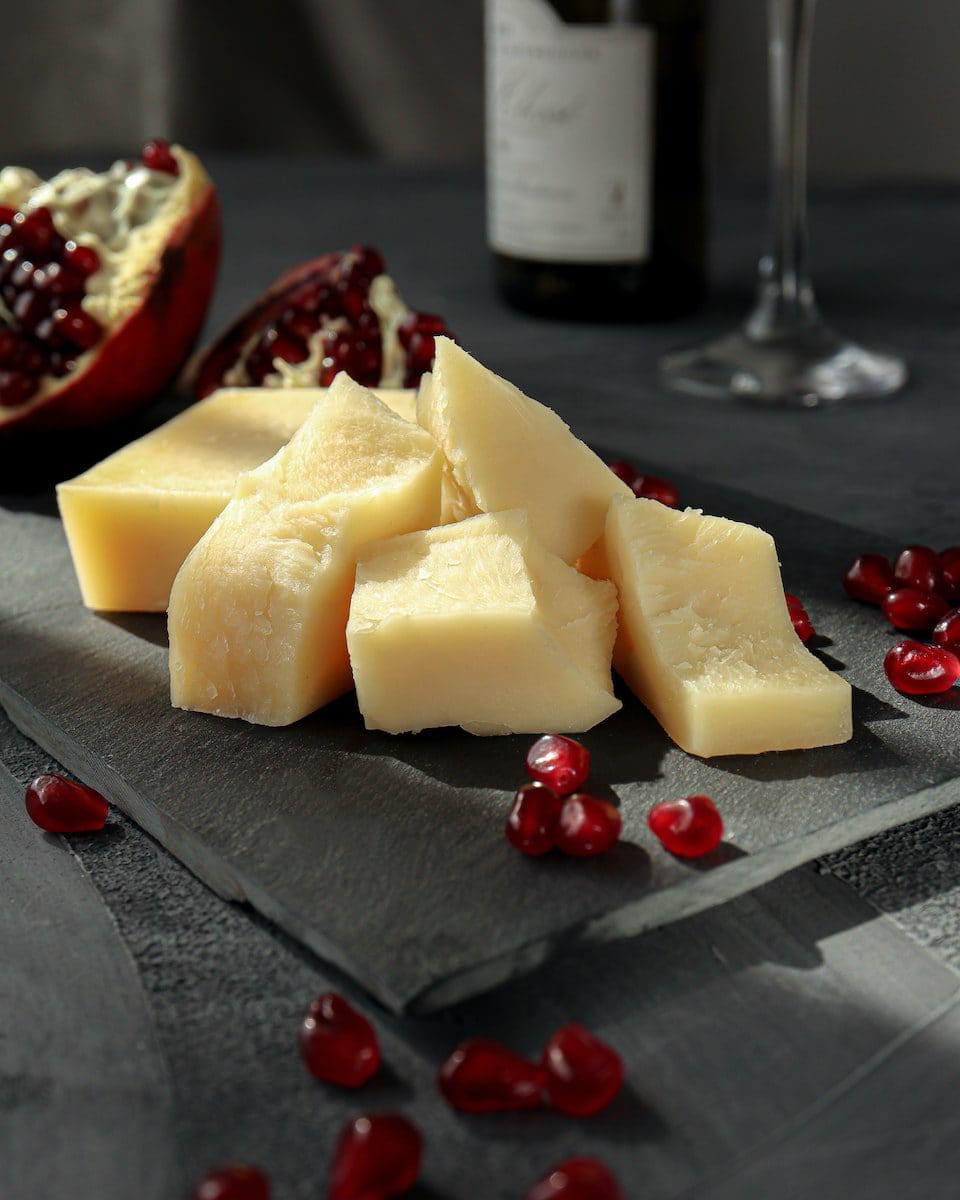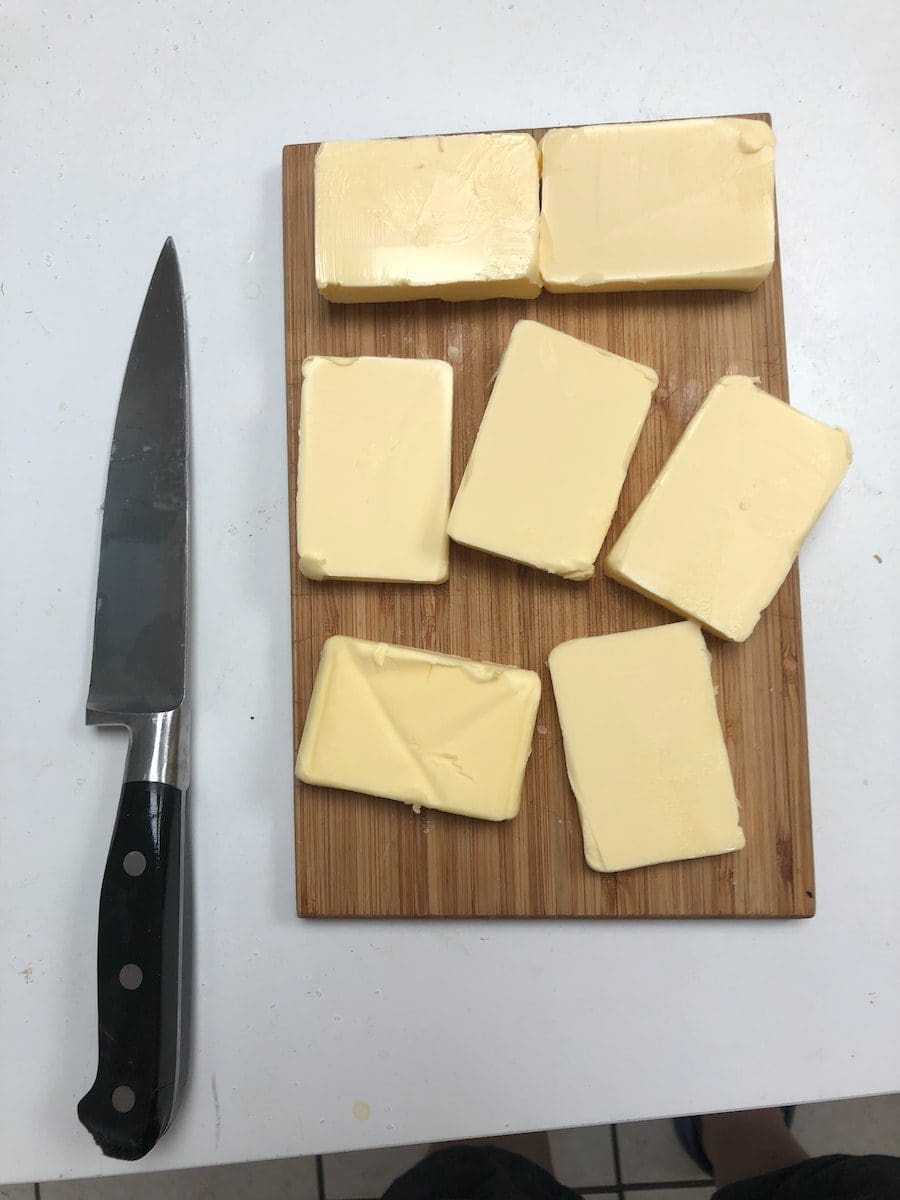Cheese and Butter are both the by-products of Milk. Both the items are used in our day-to-day life every day. Usually, it is taken in the breakfast as simple food because it is easy to consume and it light.
Butter is much creamier than the Cheese, while the Cheese has a rich protein content.
Key Takeaways
- Cheese is a dairy product made by coagulating milk proteins, while butter is produced by churning cream to separate the fat from the liquid.
- Cheese offers a variety of flavors, textures, and types, while butter has a more uniform taste and texture.
- Cheese contains more protein and calcium than butter but has a higher sodium content, whereas butter is richer in fat and calories.
Cheese vs Butter
The difference between Cheese and Butter is that Cheese is made by the amalgamation of milk protein which is called the “Casein enzyme.” On the other hand, Butter is prepared by separating the milk layer and which is called the buttermilk layer. This layer is formed by stirring the milk.

Cheese is basically a dairy product that is produced in many varieties and flavors. It is rich in protein content as it is formed by the amalgamation of enzymes which is called the “Casein enzyme.”
Cheese can be manufactured from any animal milk like camel, goat, cow, or buffalo.
Butter is also a dairy product which is also referred to s the by-product of Milk. It is formed when the milk is stirred and separates the Butterlayer from the milk layer.
Usually, this milk is fermented, which contains the bacteria, and when it is stirred for a long time, a layer of buttermilk is formed.
Comparison Table
| Parameters of Comparison | Cheese | Butter |
|---|---|---|
| Formation | It is formed by the amalgamation of the “Casein enzyme”. | It is formed by separating the Buttermilk layer formed above the Milk. |
| Protein | High | Less |
| Texture | It can be hard as well as soft also. | It is soft depending on the storage temperature |
| Calories | It has fewer calories | The number of calories is double that of Cheese. |
| Uses | It is used as an additive in sauces and melted to form the toppings. | It is used for cooking. |
What is Cheese?
Cheese is rich in Vitamins and Minerals, which contrast the nutrition the fact that it is rich in protein content also.
It is formed by the amalgamation of the “Casein enzyme.” These enzymes are found in milk and are rich in amino acids and proteins.
Once this enzyme is added, it turns the sugar into acid, which is called Lactic acid. After a time, the milk, which is in liquid form, starts changing its state from Liquid to Solid-state.
After this, we have two parts one is solid, and the other one is liquid. The solid part is kept, and a small amount of salt is added to give a taste. Finally, the producer makes it into the desired shape so that it can be packed.
Cheese comes in a variety of flavors and additives that is added to them. In the production stage, various kinds of flavors can be added to give a flavor to the Cheese.
Apart from being rich in protein and vitamins, Cheese also has a high content of calcium which is helpful for the bones and teeth to make them strong. It has exceptionally good nutritional benefits when compared with Butter.
Cheese is used in many food items to add flavor to the food. It is used in toppings when it is melted.

What is Butter?
The process of making Butter is completely different from that of Cheese. In this, the milk layer is separated from the Buttermilk layer, which is formed due to the fermented milk and stirring of milk.
Usually, in this, the milk is fermented first, and when it is totally fermented, the layer is separated from the milk layer and stored in a container where it is then mixed with milk protein to give a good nutritional value.
The milk layer which is separated is called the Buttermilk layer, which has a high content of fats. Due to this, the Butter has double the calories with respect to the Cheese.
Once the butter is made, a small amount of salt is added to it to give a flavor, sometimes salt is not added, and it is sold as an original taste. Butter comes in many varieties and flavors compared with Cheese.
The texture of the butter is soft. It can be hard when it is refrigerated. The main use of Butter is for household cooking, as it gives a touche taste to the food after cooking.

Main Differences Between Cheese and Butter
- Cheese has a higher percentage of protein content, while Butter has a lower percentage of protein content.
- Cheese is high in Sodium and Calcium content which is helpful for bones and teeth to make strong, whereas the amount of Sodium and Calcium is very low in Butter.
- Cheese has a low-calorie percentage as compared to Butter which has double the calorie content as Cheese, due to which it is easy to gain weight when consuming Butter.
- Cheese is formed by the mixing of the Casein enzyme, while Butter is formed by separating the layer formed above the milk.
- Cheese comes in low varieties and flavors as compared to Butter which has many varieties and flavors.

- https://www.cambridge.org/core/journals/british-journal-of-nutrition/article/comparison-of-the-effects-of-cheese-and-butter-on-serum-lipids-haemostatic-variables-and-homocysteine/17DCC0A9CB96C274AA454733DF16DF36
- https://academic.oup.com/ajcn/article-abstract/94/6/1479/4598184
